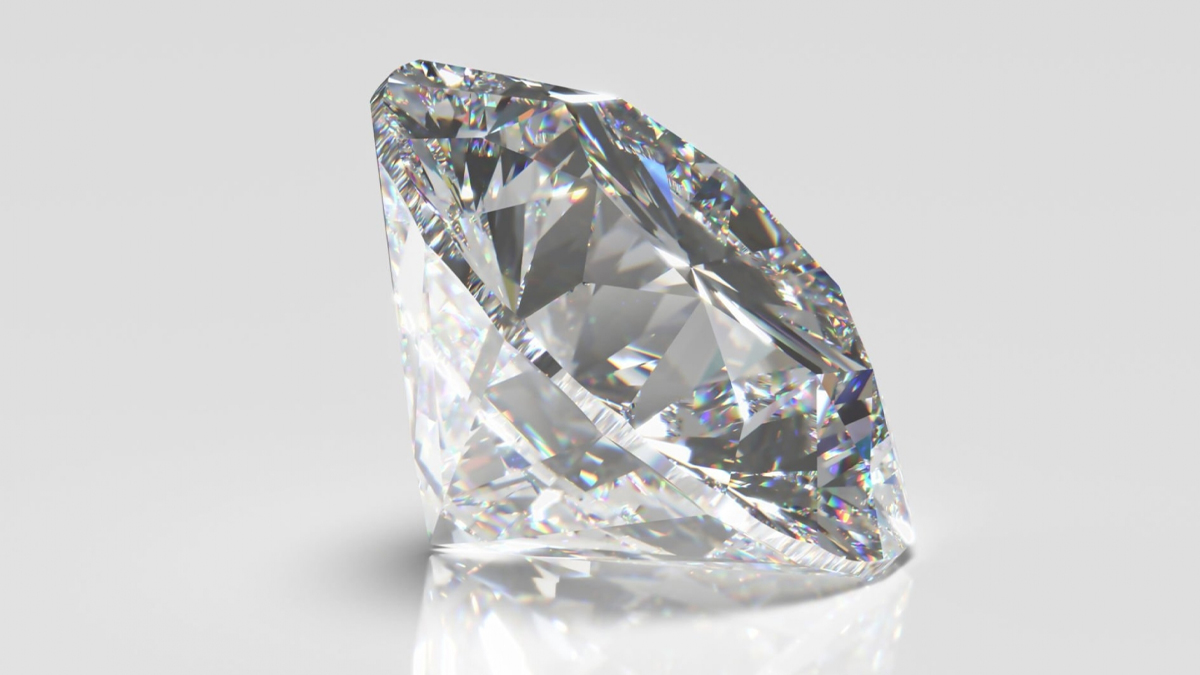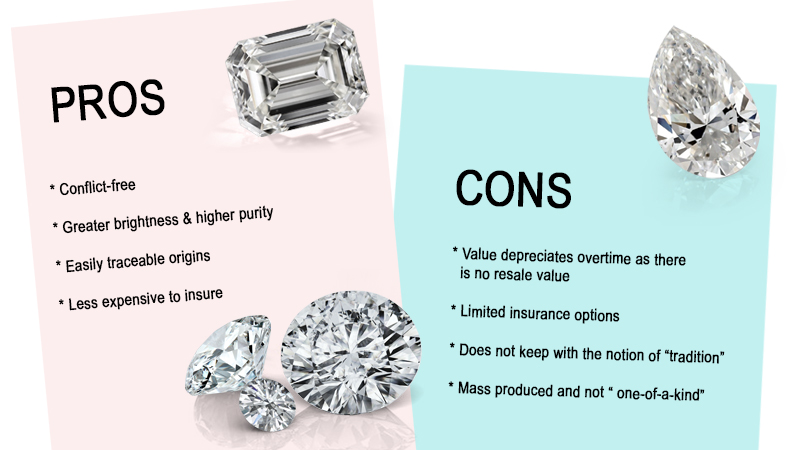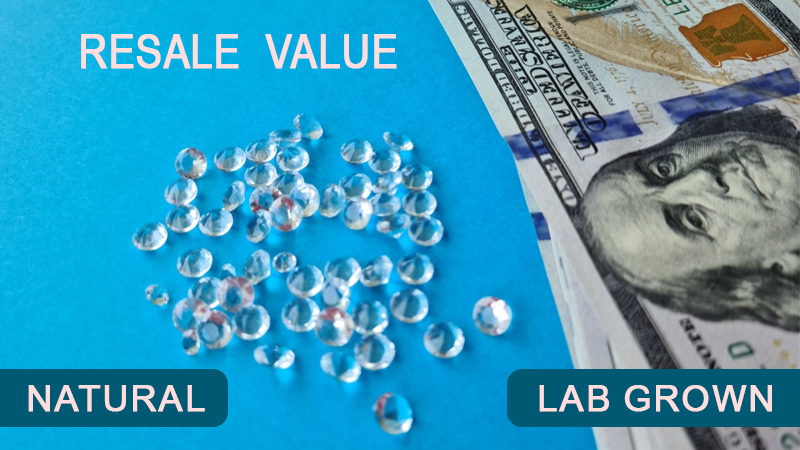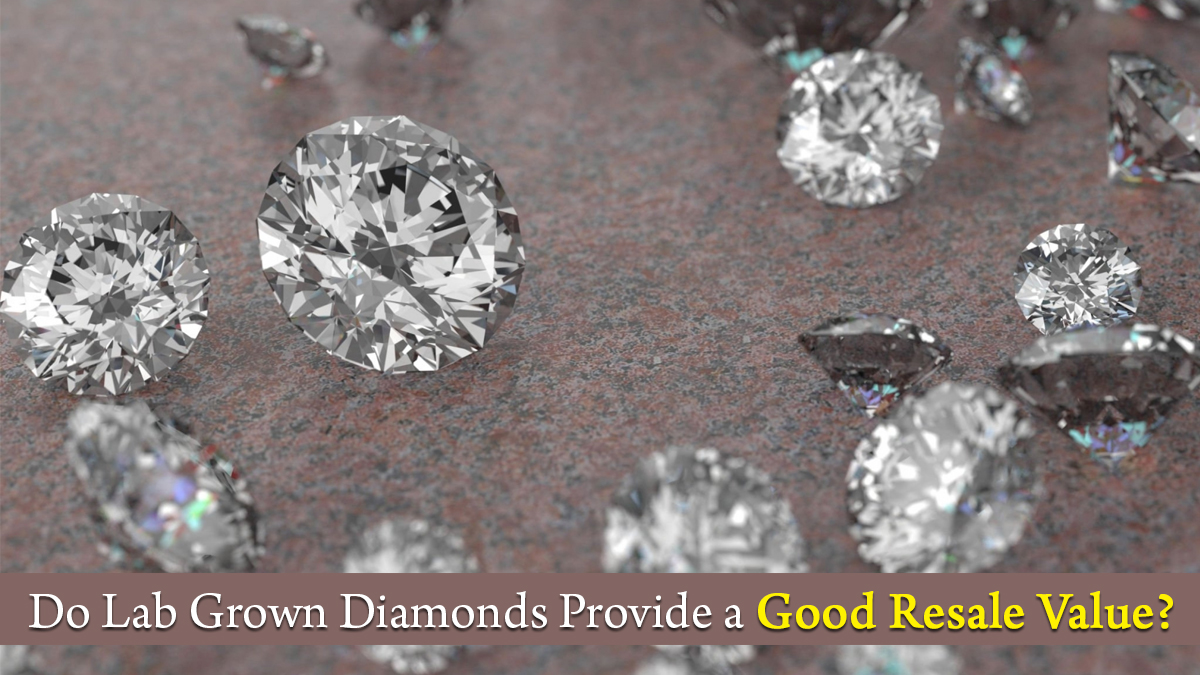Diamonds are extremely valuable gemstones in the world, for centuries diamonds have been valued for their rarity, beauty and durability. Lab Grown Diamonds are becoming increasingly popular. People often ask if they can retain their resale value over time.
They have the same chemical properties as natural diamonds and, in most cases, appear identical. They are true diamonds in almost every way except their origin or formation.
Lab Grown Diamonds are valuable. When choosing an lab engagement ring or wedding ring, many couples are now considering buying a lab grown diamond ring. The decision to lab grown custom engagement ring reflects not only personal taste, but also modern values and priorities.
Lab diamonds are created in a laboratory using advanced technology. This technology mimics the properties of natural diamonds. All these factors contribute to the production of some of the world's finest lab diamonds.
Lab grown diamonds are up to 40% less expensive than mined diamonds. This is due to the time, difficulty and expense of the mining process.
We have created a comprehensive resource that covers everything you need to know about Lab Grown Diamonds and their value. Before knowing the value of lab-grown diamonds it is important to understand their pros and cons. This text outlines the advantages and disadvantages of diamonds that have been grown in a laboratory setting.
Advantages: Lab-grown diamonds offer a more ethical and sustainable product with no human or environmental cost. They are also a more cost-effective option, with some stones being up to 40% less expensive than mined diamonds. Lab-grown diamonds are also available in larger sizes than mined diamonds, allowing for larger cuts and designs.
Lab-grown diamonds may not be as valuable as mined diamonds. They are not as rare or desired. They also lack the historical significance or sentimental value associated with mined diamonds. Additionally, lab-grown diamonds may take longer to resell since they are not as widely accepted by jewelers.
The Pros of Lab-Grown Diamonds

The benefits of lab grown diamonds are:
If you are searching for a top-notch diamond, opt for a lab-created stone. This ensures you get a pristine diamond. Natural diamonds contain impurities, such as dirt ingrained. These impurities are caused by the natural environment in which they formed in the mines.
Whereas lab grown diamonds are pure and bright as they are created in a controlled environment. So, they have fewer flaws and are brighter and whiter than natural diamonds.
You don't want to spend too much money to buy a nice piece of jewelry. This could be an engagement ring or any other kind of fine jewelry. Another reason to think about a lab-grown diamond is its affordability. You will get 40% less and the same size and quality of lab grown diamond as of natural diamond.
Lab-grown diamonds cost less to produce. This implies that it is possible to purchase a bigger diamond at the same cost. High pressure and high temperature (HPHT) created diamonds are more durable than diamonds created by chemical vapor deposition (CVD).
Additionally, HPHT diamonds retain their value better over time. HPHT-created diamonds are occasionally purer than CVD-created stones and so have a higher value.
No Conflicts - Natural diamond mining adversely affects the environment, such as deforestation, soil erosion, ecosystem destruction and forced migration. Many diamonds have been tainted by serious human rights violations such as forced labor, beatings, torture, and murder.
High quality Diamonds created in a laboratory are conflict-free. Diamond miners are never harmed or exploited in the process of creating lab-grown diamonds. As a result, there is never any doubt that you are purchasing a "blood diamond."
Eco-Friendly - Have you ever thought about how natural diamonds are mined? It requires massive amounts of fuel and heavy power machinery to extract the diamonds from massive mining holes. Diamond mines have a negative environmental impact. They destroy natural habitats and use a lot of fossil fuels and power equipment.
However, lab grown diamonds are conflict free and more environmentally friendly. They may have less environmental impacts because they are made in laboratory and may be safer to manufacture. This is promising for future sustainability.
Lab grown diamonds cost less than natural diamonds. This is because they are produced in a laboratory rather than mined. Consequently, less money is required.
Lab grown diamonds are more affordable for customers. This helps reduce the price difference between natural and lab grown diamonds.
Diamonds are more ethically sourced now. Customers can have peace of mind that their diamonds are not linked to any human rights violations or environmental damage. In addition, lab grown diamonds can last longer than natural diamonds, making them a better investment in the long run.
The Cons of Lab-Grown Diamonds

Value - Man-made diamonds are a relatively new addition to the jewelry industry. As a result, the long-term value of lab-grown diamonds is still unknown. It may not hold their value as natural diamonds, their value declines over time.
Lab grown diamonds may lose their value after a year. Natural diamonds, however, usually become more valuable over time. If you plan to resell your lab-grown diamond jewelry, this will have an impact on its value. Understandably, this could affect the price you receive upon resale.
Energy Intensive Production - To create lab grown diamonds, manufacturers must expend enormous amounts of energy. While they provide jobs in labs, they do not provide jobs or income to those working in diamond mines.
However, the technology evolves in future, energy consumption may also decrease. The diamond creation process can have a negative environmental impact. This is especially true when done using the HPHT (high temperature, high pressure) method. Carbon emissions are a possible result of this method.
Rarity - As the lab grown diamonds are manufactured in laboratories, they can be mass - produced. Thus, these diamonds will not be as one-of-kind as those diamonds mined from the earth's surface. Lab grown diamonds are still not available as widely as natural diamonds. This could limit the option for buyers and impact the availability of certain shapes, sizes and colors.
The demand for lab grown diamonds is rising. However, it may be hard to meet this demand because the quality of diamonds varies.
Lab-grown diamonds may be more expensive than mined diamonds. This is because the cost of production is high and certain shapes, sizes, and colors are not widely available. Therefore, buyers should consider these factors when making a decision about which type of diamond to purchase.
Lab grown diamonds also have a smaller resale value than natural diamonds. Natural diamonds have a higher demand and are easier to resell. In addition, the long-term durability of lab-grown diamonds may be an issue.
Creating lab-grown diamonds is a relatively new technology. It is uncertain how durable they are in the long run. Will they withstand wear and tear? We do not yet know.
Conclusion

Man-made diamonds are real diamonds. However, they have many benefits compared to natural diamonds. There are also some cons or disadvantages.
Technology advances in lab-grown diamonds are increasing their market share in the diamond industry. This may reduce the value of previously sold lab-created diamonds.
Lab grown diamonds are not as rare as natural diamonds, their value declines over time. They are also energy intensive production and limited availability. However, with the advancement of modern technologies, man-made diamonds have grown in popularity also known as lab-grown diamonds. Because they are less expensive than natural diamonds and they are truly affordable.
Many jewelers continue to discourage their buyers by explaining that lab-grown diamonds have no resale value. There is a common perception that lab grown diamonds hold value over time. The truth is, you won't get the same price for a lab-created or natural diamond when you resell it.
When you buy a diamond engagement ring, you are paying for the jeweler's expertise. This includes cutting, polishing and grading. Additionally, you are also paying for a reasonable profit.
Lab diamonds can be resold for 30-40% less than their original price. The same is true for a natural diamond ring.
Lab diamonds are less expensive than natural diamonds. This means you can make a small profit by reselling them. This makes them attractive for people who are looking for a quality piece of jewelry that won't break the bank.
Also, lab diamonds are more environmentally friendly, as they don't require the mining and production of traditional diamonds. This makes them a great choice for those who are conscious of their environmental impact.
So, what if the resale value of lab diamond is not equal to or greater than the original purchase price? What matters is that they can be resold.
For those searching for a good investment, lab grown diamonds give an enticing option. So, if you are going to invest in a diamond piece, make sure it is of higher quality and size. It is important to consider these factors and make a decision based on your own values and preferences.

